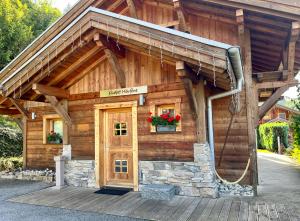Lorraine
LorraineEnglish: /ləˈrn/, also English: /lɒˈ-/, English: /lˈ-lˈ-/, French: [lɔʁɛn]; Lorrain: Louréne; Lorraine Franconian: Lottringe; German: Lothringen German: [ˈloːtʁɪŋən]; Luxembourgish: Loutrengen; Dutch: Lotharingen is a cultural and historical region in Northeastern France, now located in the administrative region of Grand Est. Its name stems from the medieval kingdom of Lotharingia, which in turn was named after either Emperor Lothair I or King Lothair II. Lorraine later was ruled as the Duchy of Lorraine before the Kingdom of France annexed it in 1766.
From 1982 until January 2016, Lorraine was an administrative region of France. In 2016, under a reorganisation, it became part of the new region Grand Est. As a region in modern France, Lorraine consisted of the four departments Meurthe-et-Moselle, Meuse, Moselle and Vosges (from a historical point of view the Haute-Marne department is located in the region), containing 2,337 communes. Metz is the regional prefecture. The largest metropolitan area of Lorraine is Nancy, which had developed for centuries as the seat of the duchy.
Lorraine borders Germany, Belgium, and Luxembourg. Its inhabitants are called Lorrains and Lorraines in French and number about 2,356,000.
History
Lorraine's borders have changed often in its long history. The location of Lorraine led to it being a paramount strategic asset as the crossroads of four nations. This, along with its political alliances, marriage alliances, and the ability of rulers over the centuries to choose sides between East and West, gave it a tremendously powerful and important role in transforming all of European history. Its rulers intermarried with royal families over all of Europe, played kingmaker, and seated rulers on the thrones of the Holy Roman Empire and the Austro-Hungarian Empire, and others.
In 840, Charlemagne's son Louis the Pious died. The Carolingian Empire was divided among Louis' three sons by the Treaty of Verdun of 843. The middle realm, known as Middle Francia, went to Lothair I, reaching from Frisia in Northern Germany through the Low Countries, Eastern France, Burgundy, Provence, Northern Italy, and down to Rome. On the death of Lothair I, Middle Francia was divided in three by the Treaty of Prüm in 855, with the northern third called Lotharingia and going to Lothair II. Due to Lotharingia being sandwiched between East and West Francia, the rulers identified as a duchy from 870 onward, enabling the duchy to ally and align itself nominally with either eastern or western Carolingian kingdoms in order to survive and maintain its independence. Thus, it was a duchy in name but operated as an independent kingdom.
In 870, Lorraine allied with East Francia while remaining an autonomous duchy. In 962, when Otto I, Holy Roman Emperor, restored the Empire (restauratio imperii), Lorraine was designated as the autonomous Duchy of Lorraine within the Holy Roman Empire. It maintained this status until 1766, after which it was annexed under succession law by the Kingdom of France, via derivative aristocratic house alliances.
The succession within these houses, in tandem with other historical events, would have later restored Lorraine's status as its own duchy, but a vacuum in leadership occurred. Its duke Francois Stephen de Lorraine took the throne of the Holy Roman Empire as Francis I, and his brother Prince Charles Alexander of Lorraine became governor of the Austrian Netherlands. For political reasons, he decided to hide those heirs who were not born by his first wife, Archduchess Maria Anna of Austria, who was deceased when he took office.
The vacuum in leadership, the French Revolution, and the political results and changes issuing from the many nationalistic wars that followed in the next 130 years, ultimately resulted in Lorraine becoming a permanent part of the modern Republic of France. Because of wars, it came under control of Germany several times as the border between the nations shifted. While Lorrainian separatists do exist in the 21st century, their political power and influence is negligible. Lorraine separatism today consists more of preserving its cultural identity rather than seeking genuine political independence.
With enlightened leadership and at a crossroads between French and German cultures, Lotharingia experienced tremendous economic, artistic, and cultural prosperity during the 12th and 13th centuries under the Hohenstaufen emperors. Along with the rest of Europe, this prosperity was terminated in Lorraine in the 14th century by a series of harsh winters, bad harvests, and the Black Death. During the Renaissance, a flourishing prosperity returned to Lotharingia until the Thirty Years' War.
France inherited Lorraine in 1766. Due to the region's location, the population has been mixed. The north is largely German, speaking Lorraine Franconian and other German dialects. Strong centralized nationalism had only begun to replace the feudalist system which had formed the multilingual borders, and insurrection against the French occupation influenced much of the area's early identity. In 1871, the German Empire regained a part of Lorraine (Bezirk Lothringen, corresponding to the current department of Moselle). The department formed part of the new German Empire's Imperial Territory of Alsace–Lorraine. In the French Third Republic, the revanchist movement developed to recover this territory.
The Imperial German administration strongly discouraged the French language and culture in favor of High German, which became the administrative language (Geschäftssprache) It required the use of German in schools in areas which it considered or designated as German-speaking, an often arbitrary categorisation. French was allowed to remain in use only in primary and secondary schools in municipalities definitely considered Francophone, such as Château-Salins and the surrounding arrondissement, as well and in their local administration.
But after 1877, higher education, including state-run colleges, universities and teacher seminaries, was conducted exclusively in German. The predominance of German and the partial usage of French, though restricted, were both guaranteed by the 1911 constitution of Alsace-Lorraine. While many toponyms of German etymology in Lorraine were adapted to the High German standard (i.e. Germanised) a number of genuine Francophone toponyms remained untouched. During the Nazi occupation between 1940 and 1944, however, its government imposed arbitrary German translations to replace all French names. For instance, Château-Salins was called Salzburg in Lothringen. During the Battle of the Frontiers at the beginning of World War I, the French First Army invaded Lorraine and briefly occupied Mulhouse. However, the German Sixth Army under Crown Prince Rupprecht of Bavaria counterattacked and forced the French forces into retreat at the Battles of Sarrebourg and Morhange. Lorraine remained under martial law, close to the Western Front in northeastern France, and suffering from refugee crises for the rest of the war. The population effectively revolted against German rule by participating in the German Revolution of 1918–1919, and welcomed French troops into the region several days later.
In the 1919 Treaty of Versailles, the Weimar Republic suffered severe territorial losses following World War I, including the portion of Lorraine territory that had been part of its state of Alsace-Lorraine. With the exception of its de facto annexation by Nazi Germany as part of the Gau Westmark during World War II, that area has since remained a part of France. During that war, the cross of Lorraine was a symbol of Free France.
Development of the borders in modern history
The administrative region of Lorraine is larger than the 18th century duchy of Lorraine, which gradually came under French sovereignty between 1737 and 1766. The modern region includes provinces and areas that were historically separate from the duchy of Lorraine proper. These are:
- Barrois
- Three Bishoprics: non-contiguous territories around Metz, Verdun, and Toul, which were detached from the Holy Roman Empire in the 16th century and came under French sovereignty.
- Several small principalities, which were still part of the Holy Roman Empire at the time of the French Revolution.
Some historians consider the traditional province of Lorraine as limited to the duchy of Lorraine proper, while others consider that it includes Barrois and the Three Bishoprics. The duchy of Lorraine was originally the duchy of upper Lorraine, and did not include the entire area since called Lorraine.
The case of Barrois is the most complicated: the western part of Barrois (west of the Meuse), known as Barrois mouvant, was detached from the rest of Barrois in the early 14th century and taken over by French sovereignty. The largest part of Barrois (east of the Meuse River) was the Duchy of Bar, part of the Holy Roman Empire. In the 15th century, it was united with the Duchy of Lorraine by the marriage of the Duke of Bar, René of Anjou, with Isabella, daughter of the Duke of Lorraine. Thus the duchies of Bar and Lorraine were united in personal union under the same duke, although formally they were officially separate until being annexed and incorporated into the Kingdom of France in 1766.
During the French Revolution, four departments were created from the main parts of the territories of Barrois, Three Bishoprics and the Duchy of Lorraine:
- Meuse,
- Meurthe,
- Moselle and
- Vosges.
After 1870 some parts of Moselle and Meurthe became German. Of the remaining parts, France formed the new department named Meurthe-et-Moselle. After 1918 and the Great War, France took over control again of Moselle.
When France created its administrative regions in the middle of the 20th century, it decided to gather Meurthe et Moselle, Meuse, Moselle and Vosges into a single region, known as Lorraine.
Geography
Lorraine is the only French region to have borders with three other countries: Belgium (W…
Hotels Lorraine
Looking for places related to Lorraine?
Those are other destinations to find places related to Lorraine:


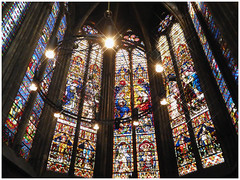










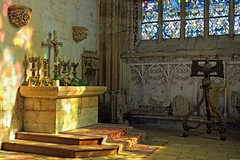
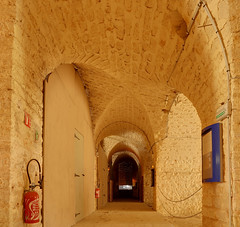

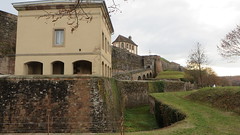
](https://live.staticflickr.com/5806/21170325580_143a3d0af9_m.jpg)

](https://live.staticflickr.com/3872/14934482070_89d4b580e4_m.jpg)








